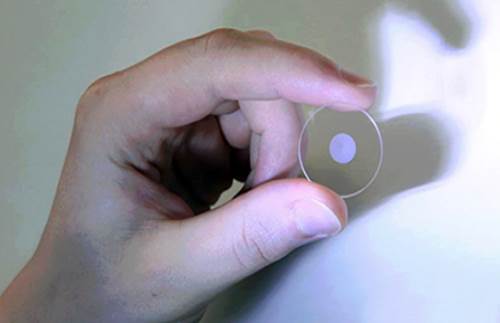Superman Crystal Memory Disk

This small disk is called the Superman Memory Crystal, is able to hold 360 Terabytes of data and preserve it for over one million years.
Researchers at the University of Southampton have created an extremely dense and durable memory that can store 360 TB of data on a single disc for an indefinite amount of time. The structure, which is made of glass, can resist temperatures up to 1,000° C (1,800° F) and would be perfect for creating portable data archives that can truly stand the test of time.
Information is written using a femtosecond laser, which fires extremely short (a femtosecond is a millionth of a billionth of a second) and powerful bursts of light inside a dense three-dimensional nanostructured glass.
The data is stored in three layers of nanostructured dots separated by five micrometers (millionths of a meter). Each dot contains information in the form of the intensity and polarization of the laser beam. Since there are five variables – the three dimensions plus polarization and intensity – the researchers refer to this technique as "5D data storage."
The process changes the way light travels through the glass, creating polarized light that can then be read in much the same way as data in optical fibers, with an optical microscope and a polarizer.
The result is an extremely stable and high-density data storage technique that would allow 360 TB of (almost) incorruptible data to be stored on a standard sized disc. Normally, you'd need close to eighty thousand DVDs to store that amount of data.
While not as impressive as some of the other specifications, read and write speed are also somewhat boosted. "The read speed should be eight times faster compared with conventional disc storage applications, while the writing speed is limited by many factors – power of the laser, refresh rate of the spatial light modulator, number of pulses, and so on.
The current writing speed is 12 Kbit/sec, but that this could rise to about 8 Mbit/sec using ferroelectric liquid crystals, and to several Gbit/sec using magneto-optical spatial light modulation (MOSLM). A 300 kb text file was successfully recorded and then retrieved by the researchers. Writing data isn't an irreversible process as the files can be easily erased and then new information written in its place.
The writing device will cost tens of thousands of pounds using current technology, but the reading device will be much cheaper, around a few hundreds pounds.


